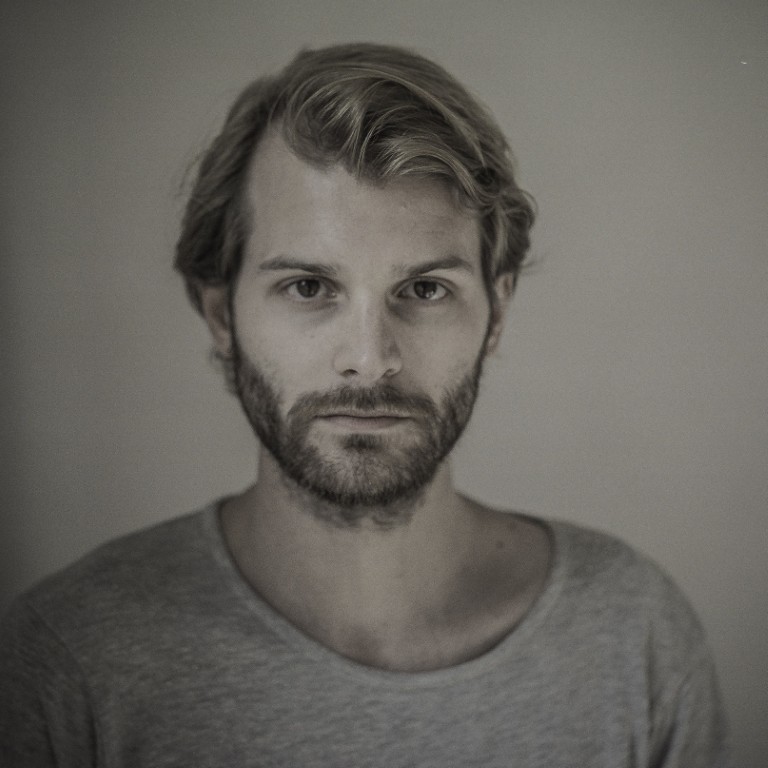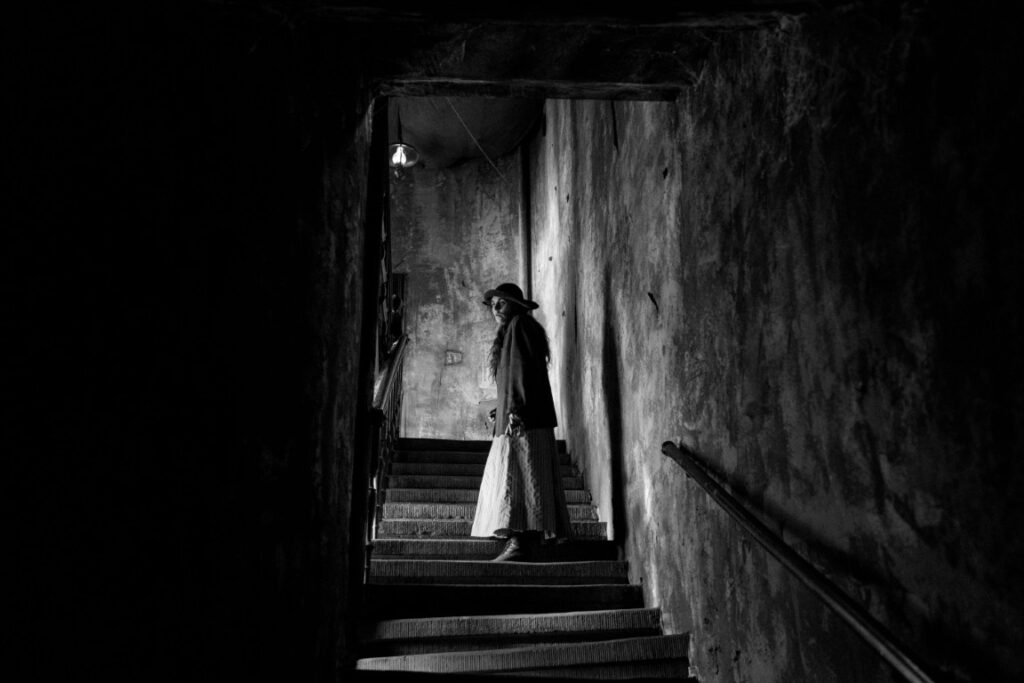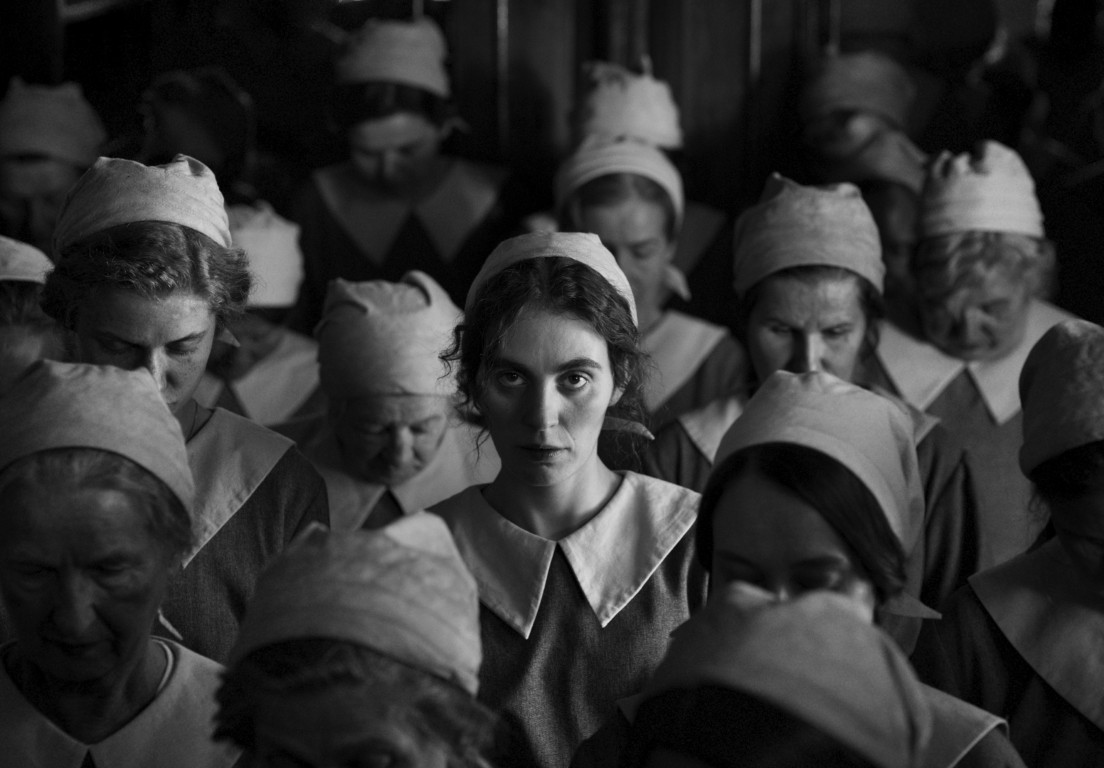Read also:
How to Watch FX Live Without CableHow To Watch AMC Without CableHow to Watch ABC Without CableHow to Watch Paramount Network Without CableNominated for Best International Feature Film at the 97th Academy Awards, director Magnus von Horn’s The Girl with the Needle is a true crime horror film loosely based on the story of Danish serial killer Dagmar Overbye (Trine Dyrholm). Set in Copenhagen in 1919, it tells the story of Karoline (Vic Carmen Sonne), a young woman whose husband, Peter (Besir Zeciri), is believed to have been killed after deployment. She works as a seamstress at a local factory and strikes up a romance with her boss, Jørgen (Joachim Fjelstrup), eventually falling pregnant.
When Jørgen’s mother forbids Karoline and Jørgen to be married, Karoline attempts to have an abortion but at the last second is stopped by Dagmar, who runs an adoption agency for women like Karoline, who either can’t afford (or simply may not want) to take care of their babies. Karoline is nursed back to health by Dagmar and joins her operations as a wet nurse. Still, she begins to suspect Dagmar’s goodwill, especially Dagmar’s claims that she’s been able to find suitable homes for all the babies dropped off at their agency.
While there’s no shortage of grisly acts of violence, The Girl with the Needle is striking when considered as a sort of grown-up fairy tale, one that shades great beauty and great evil with nuance and intricacy. “If you’re making a fairy tale for adults, which is what I wanted to do with this, you bring those complex emotions to the forefront,” von Horn shared.
He and Carmen Sonne spoke with The Spool about the film’s chilling score, how deleted scenes that are never scripted or shot can help an actor better inhabit a character, and the liberation that comes with writing in a different language.
This conversation has been edited and condensed for clarity.
Vic, you were attached to this project for a long time.
VCS: I was cast two and a half years before the shoot, but Magnus, you, and [co-writer] Line had already worked on the script for a while.
MVH: It was about two years. Vic could read new drafts of a story as we’d write. It was a very productive collaboration where the dialogue started early on.
Magnus, I’m curious how the script changed as the team worked to get it off the ground. What changed, say, from draft 2 to draft 5?
MVH: I don’t know how many drafts we had on this film. It took maybe four years to write this film. We each took the lead at different points; she wrote for the first two years, but I wrote for the latter two. This refining process is important because, as director, I want the writing to become as close to what I know I have to work with the day we start shooting.
The later drafts are very much adjusted to the reality of what I knew we would have to work with in terms of locations we would shoot at and such. As much as I like to plan, I leave room for my collaborators to surprise and inform my work. Meeting Vic and casting her … that also influenced the scripts. I try to approach everything with that sense of discovery.
VCS: I like the word “discover.” It felt like one big discovery for the two years that I was attached to the film before shooting. I don’t like to use this metaphor of playing, but it felt very playful and exciting, and there was a lot of curiosity. I remember there was a lot of laughter while building out the story’s particulars and characters. At one point, I had suggested that Karoline would go to the carnival, and then at some point, we said, “Let’s cut that before we start trying to carve out what that might look like because it might be a bit over budget.”
But Magnus was not super focused on what’s “possible,” and that allowed his actors to engage and workshop the character’s movements and motivations freely. I admire and am inspired by how he engages with human psychology and the soulfulness of his characters. Even things that end up not even in the script; I remember there was a scene with two other actors that never ended up in the script, but I took those ideas and had it in the back of my mind when I’d interact with those characters in other scenes.
MVH: Totally; we discover the world in between the scenes even if those scenes don’t end up in the script. Even with what never gets shot, those moments are still a part of the characters’ lives.

We’ll dive into the darker aspects of this film’s story, but I loved the way you imbue moments of levity in these dark moments, Magnus. I think of that scene where Karoline and Jørgen have their meet-cute of sorts and laugh in the movie theater they’re in to everyone’s annoyance.
VCS: It was a fun day of shooting!
MVH: Karolina goes through a lot in this film, but she has an active part in where she ends up in the film. I needed not to want this character to be someone who is pushed around, kidnapped, abused, and tricked. She has agency and an active and rich life, and I think if we show that she’s just a receiver for all these horrific acts, then she becomes uninteresting. The laughter and nuance make her a main character. In many ways, the film feels like a coming-of-age film.
She’s not passive. This speaks to your view of this as an adult fairy tale; sometimes, in the way we tell fairy tales, things happen to the characters without their influence or ability to change course, but here, Karolina has much more of an active role.
VCS: It’s funny what you say because I think even in the fairy tales we tell ourselves, there are lots of layers to agency that don’t often get talked about. Think of something like Cinderella, who you could blame for being passive, but if you look closer, she’s the one who wants to go to the ball, accepts the gown from the mice, and calls her fairy godmother. You can go to the most far-out aspects of reality or a heightened reality fairytale, but universal and existential emotions are present throughout.
MVC: I like that you mentioned that, Vic, because in the fairy tale we tell kids, we hide the “activity” or the “active” part of the characters. But if you’re making a fairy tale for adults, which is what I wanted to do with this, you bring those complex emotions to the forefront. You can tell this story for a slightly different audience, and she would become much more pragmatic in her quest for whatever she wants.
VCS: The question does become how you tell the story and how you look at it.
Vic, last year, you had a role in Azrael where you played Miriam, another character who is pregnant …
VCS: (Laughs) That became a thing for me lately!
Have you thought of those roles as being in any way connected?
VCS: I appreciate connecting with directors and filmmakers who share the same discovery. There’s a sense of genuine curiosity and excitement of the world within the characters, and so that’s where I see a connection between those roles.

I’d love to hear what you two think about the language of the film. Jorgen says, “I can’t believe you’re mine,” or Dagmar says something like, “Doctors and lawyers will be parents,” which reinforces this classist thinking. I’m curious about what the two of you think about the role of violent language in films.
MVH: That’s an interesting question. There’s another line where Dagmar says, “Whoever gets these babies are people who can afford to do good.” It was an active choice to set this film a hundred years ago and make it in black and white. It plays with fairy tale elements and looks far, far away from us. That distance allows for this slightly exaggerated language. It would be too much or exaggerated if it were a contemporary film. But how the characters are talking, with some of those lines you mentioned, fits the world back then, and I think allows for the film’s themes to rise to the surface more concretely. I like that characters can say things emphatically.
I reflect on the writing process and the dialogue… it was so liberating. You don’t have to be so subtle about certain things; contemporary people would be much more playful and speak in social codes.
VCS: I think of that scene where Karoline runs into Jørgen’s office and says, “Tell me you’ll marry me.” I remember when we were going to shoot that, and we workshopped different variations on it. We settled on the thought that when Karoline runs and says this, she’s almost replicating a confession of love that she might have read in a book or novel, like how a princess might talk to a prince. She’s not acting but is speaking a core truth.
MVH: I love that you mentioned that because in the original script, when Karoline goes to Jørgen, she says something like, “Will you take care of me?” But Vic and Joachimm when they were speaking, said, “No, she should just say ‘marry me.’”
VCS: In reading the original dialogue, we felt like this unconscious little voice in her head said, “I cannot make this into a question because there is this chance of rejection.” So we settled on her simply stating exactly what he wants.
To that point of translation and dialogue, Magnus, you’ve worked in films in other languages like The Here After in Swedish, Sweat in Polish, and now The Girl with the Needle in Danish. What was it like when you may not directly know the language and lean on collaborators like Vic, who do?
MVH: If it had been in Swedish, my mother tongue, I would have had a bigger problem with these lines. But when I hear these lines spoken in Danish, it sounds better. Everything sounds better than my mother tongue (laughs). When I see them saying these “heightened” or “enhanced” lines, I don’t hear them with all the luggage language or mother tongue that comes with it. I find it always most difficult to work or speak in Swedish because I’m expected to know the meaning of everything and to be aware of the language. But when I’m working in a different language, I have a lot of slack, and I can make mistakes or have a kind of arrogance that is quite healthy. I think I prefer it (laughs).
Even apart from the dialogue, one aspect that has stuck with me is how Frederikke Hoffmeier’s score makes scenes that would otherwise be normal, even happy, tinged with this element of humor. I think of that moment where Jørgen and Karoline are walking, and it should be romantic, but it feels horrific.
VCS: It’s funny because Frederikke (better known by her stage name, Puce Mary) is one of my best friends, and I connected her and Magnus. There were some moments where we’d talk about the score and how that might impact a scene, but similar to those deleted scenes we never shot, I kept the intentionality of what Frederikke was trying to craft with the score in the back of my head as a sort of unconscious influence as I would go about my scenes.
MVH: Early on, when developing the film, I listened to electronic dance music, specifically a very kind of low and intense electronic dance music. I thought it would be interesting to have these long musical pieces in this film and slowly evolve into something else, like the music I was listening to. Take that scene on the street; there’s something cute but also menacing, and I liked that duality. Working with Frederikke was a gift to craft the low rumble that escalates musically in certain moments.
This film has strong moments where everything breaks; you can’t have melodic music for those scenes. The music needs to break just as Karoline’s mind breaks, and Frederikke got that and embodied it in her score. It was also a great collaboration with the editor, Agnieszka Glinska, because Agnieszka also loved Frederikke’s music and knew just how to deploy it.

